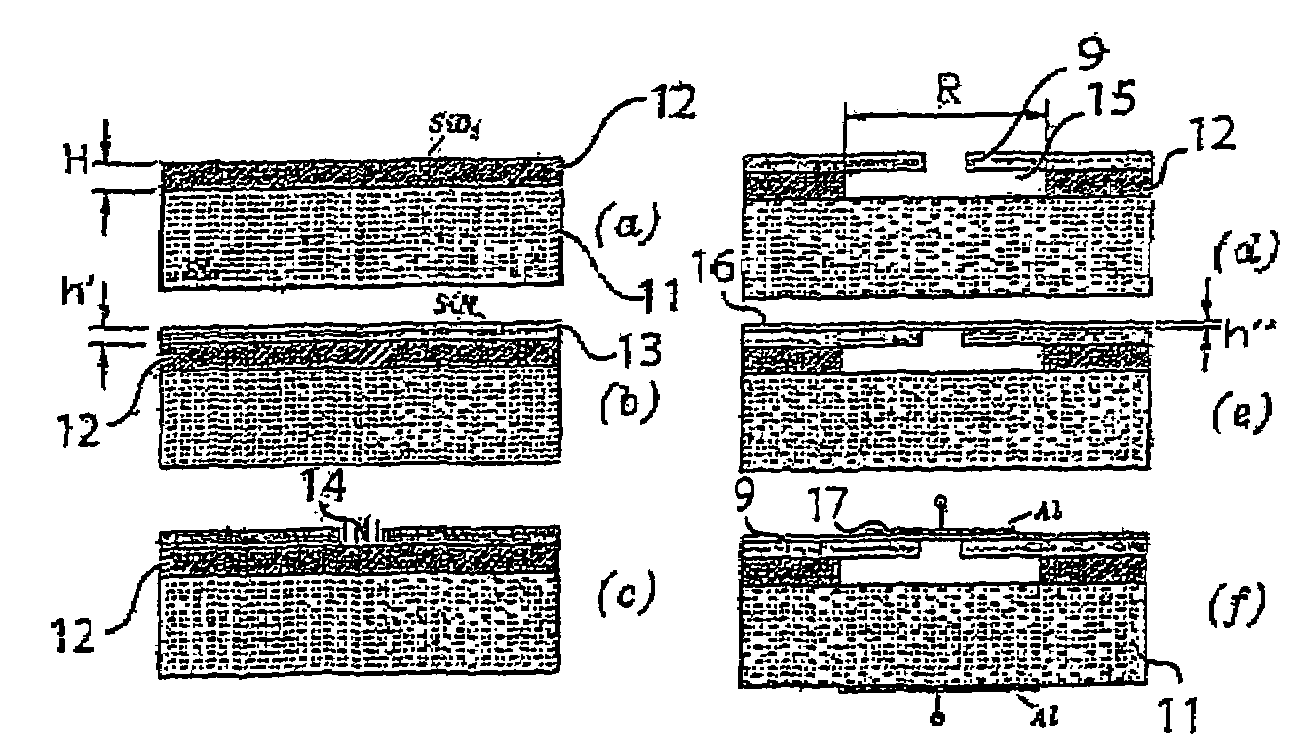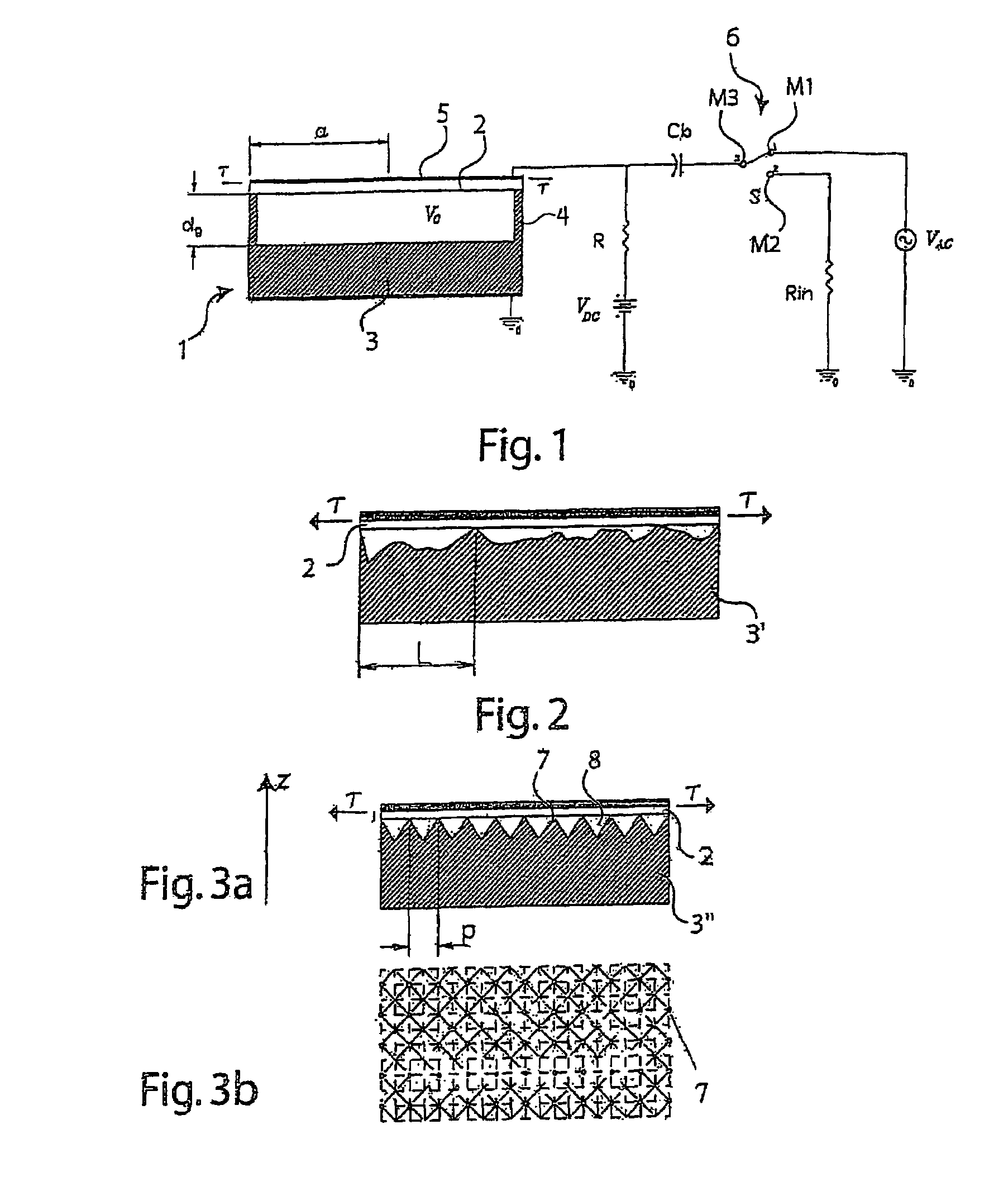Microfabricated capacitive ultrasonic transducer for high frequency applications
a capacitive ultrasonic and transducer technology, applied in the field of ultrasonic transducers, can solve the problems of increasing the complexity of implementation of these devices, reducing the performance limit of these systems, and insufficient piezocerami
- Summary
- Abstract
- Description
- Claims
- Application Information
AI Technical Summary
Benefits of technology
Problems solved by technology
Method used
Image
Examples
Embodiment Construction
[0073]For the purposes of promoting an understanding of the principles of the invention, reference will now be made to the embodiments illustrated in the drawings and specific language will be used to describe the same. It will nevertheless be understood that no limitation of the scope of the invention is thereby intended, such alterations and further modifications in the illustrated device, and such further applications of the principles of the invention as illustrated therein being contemplated as would normally occur to one skilled in the art to which the invention relates.
[0074]With reference to FIG. 10(c, d, e), the transducer according to the invention schematically consists of circular micro-cells mij in a matrix arrangement with 4 columns and an undefined number M of rows (4 in the figure for simplicity of the drawing), with M>>4. In comparison with the prior art transducer schematically depicted in FIG. 10(a, b) having uniform membranes configurations, the micro-cells accor...
PUM
 Login to View More
Login to View More Abstract
Description
Claims
Application Information
 Login to View More
Login to View More - R&D
- Intellectual Property
- Life Sciences
- Materials
- Tech Scout
- Unparalleled Data Quality
- Higher Quality Content
- 60% Fewer Hallucinations
Browse by: Latest US Patents, China's latest patents, Technical Efficacy Thesaurus, Application Domain, Technology Topic, Popular Technical Reports.
© 2025 PatSnap. All rights reserved.Legal|Privacy policy|Modern Slavery Act Transparency Statement|Sitemap|About US| Contact US: help@patsnap.com



